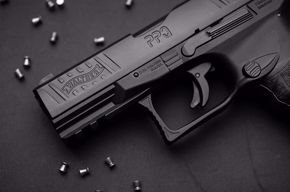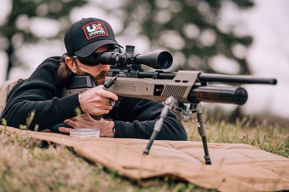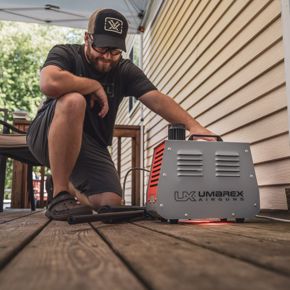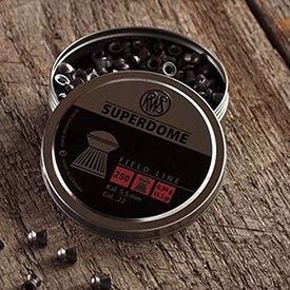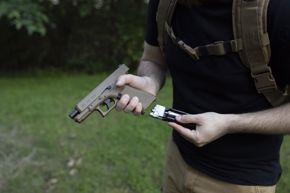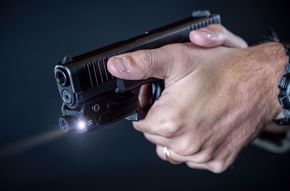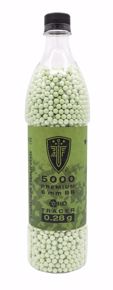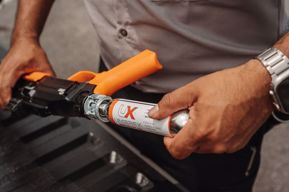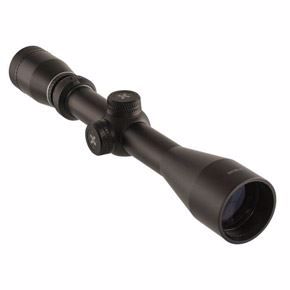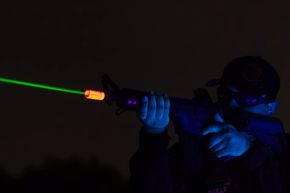If you've been shopping for a CO2 air pistol, you may have come across the term "blowback action" in product descriptions. New shooters often wonder: What exactly is blowback, and should you care about it when buying an airgun pistol? In this article, we'll break down the meaning of blowback, explain how it works, and help you understand its pros and cons. By the end, you'll know why blowback can enhance realism and when it might (or might not) be important for your airgun shooting experience. We’ll keep it clear and comprehensive, so both newcomers and seasoned shooters can benefit.
What Is Blowback in an Airgun Pistol?
Blowback (when talking about air pistols) refers to the realistic slide movement that mimics the recoil action of a real firearm. In a traditional firearm, the exploding gunpowder creates recoil that drives the slide or bolt backward. In a CO2 airgun, there’s no gunpowder explosion.Instead, the gun uses compressed gas to “blow” the slide back with each shot. In other words, part of the CO2 gas is diverted to cycle the slide automatically, creating a recoil effect.
When you fire a blowback airgun pistol, the slide kicks backward and forward for every trigger pull, just like the slide on a real semi-automatic pistol. This cycling action does a few things:
-
It simulates recoil, giving you a satisfying snap in the hand and a realistic shooting feel
-
It typically cocks the hammer/striker for the next shot, meaning the trigger reset is lighter (single-action) after the first round. This can make follow-up shots feel crisp and easy.
-
It may also lock the slide open on an empty magazine (many blowback models do), mimicking the behavior of real firearms and adding to the authenticity.
In short, blowback makes a BB or pellet pistol operate more like a real gun in terms of action. It's a feature largely about realism and experience. You’ll often see terms like “full blowback action” in product specs – this indicates the slide fully reciprocates with each shot, maximizing the realistic effect. Some models even have a noticeable metal-on-metal “clack” as the slide cycles, which many enthusiasts find highly enjoyable.
Why Does Blowback Matter When Buying an Air Pistol?
Why should you care about blowback? The blowback feature significantly affects both the shooting experience and the pistol’s performance/efficiency. Here are the key reasons blowback might matter to you as a buyer:
-
Realistic Shooting Experience: Blowback pistols are prized for their realism. The moving slide and slight recoil give you the sensation of firing a real handgun (albeit with much less force). This makes shooting more immersive and fun, especially if you enjoy firearm simulations or training exercises. For example, a blowback air pistol will re-cock itself and produce a recoil impulse, which can enhance training for handgun owners and provide satisfaction for hobby shooters. If authenticity and shooting enjoyment are priorities, blowback is a feature to look for.
-
Training and Muscle Memory: Because blowback air pistols function similarly to real firearms, they are fantastic for practice and training. You can practice trigger control, sight alignment, and even drills like drawing and firing, with feedback from the moving slide. Many blowback models also have functional slide releases and safeties, further mirroring their real-steel counterparts. This means you can build muscle memory that translates to actual firearms. The trigger on blowback pistols is often lighter after the first shot (since the slide cocks the hammer), which is closer to a real single-action trigger pull. That can help new shooters learn proper trigger technique.
-
Performance Trade-Offs: Blowback does come with trade-offs. The same gas that moves the slide could otherwise push your BB or pellet faster, so blowback guns tend to have slightly lower muzzle velocity compared to non-blowback guns of similar size/caliber. They also use up CO2 faster because some gas is spent on cycling the action. In practical terms, a blowback pistol usually gets fewer shots per CO2 cartridge, and each shot might be a bit slower, than a comparable non-blowback model. For instance, a non-blowback CO2 pistol might fire 60-80 shots on one cartridge, whereas a blowback pistol might get 40-60 before losing pressure (numbers vary by model). If maximizing power or efficiency is your main goal, blowback might be less attractive.
-
Feel and Sound: With more moving parts, blowback pistols often have a sharper report and feel. The slide movement and mechanical noise can make the shot sound a bit louder and more dynamic (though still far quieter than a firearm). Non-blowback pistols, by contrast, tend to be almost silent besides a pop of gas release. Additionally, blowback can introduce a bit of vibration, which, while enhancing realism, might affect very fine accuracy slightly (for casual plinking this isn’t usually an issue). The overall feel of a blowback gun—kick, slide cycling, and sometimes the slide staying open on empty adds excitement for many users. If you want a lively shooting session, you’ll appreciate blowback.
-
Complexity and Cost: Blowback models typically have more moving parts (e.g. slide, recoil spring, blowback valve) which can mean a bit more maintenance down the road. There’s slightly more that can wear out (seals, slide rails, etc.), so keeping them lightly oiled is a good practice. They can also be a bit higher in price than their non-blowback counterparts due to the extra engineering. However, the difference in maintenance is minor. Many modern blowback air pistols are built to be durable. Just know that a standard (non-blowback) pistol is mechanically simpler (often called “standard action” because the slide doesn’t move on its own), and thus usually very low-maintenance by comparison. If you’re on a tight budget or want a super simple point-and-shoot airgun, a non-blowback might suffice. But if you value realism, the extra cost of blowback is often worth it.
In summary, blowback matters because it directly influences how enjoyable and realistic your air pistol will be versus how efficient and powerful it can be. Some buyers will love the added realism, while others might prefer a straightforward shooter without it. To make an informed choice, it helps to compare blowback vs. non-blowback pistols side by side.
Blowback vs. Non-Blowback Air Pistols: Pros and Cons
When choosing an airgun pistol, deciding on blowback or not comes down to personal preference. Here’s a quick comparison of their pros and cons:
-
Realism and Fun: Blowback pistols deliver a realistic action. The slide cycles and you feel recoil, making them more fun and immersive. Non-blowback pistols feel more static (no slide movement), which can be a bit less engaging for some shooters. If you love the idea of your air pistol operating like the real thing, blowback is the way to go
-
Trigger Pull: Because a blowback pistol recocks the hammer/striker with each shot, you usually get a lighter, crisper trigger pull (after the first shot, most are single-action). Non-blowback models often use a double-action trigger for every shot (unless you manually cock it), which can be heavier and longer. This means blowback guns often have an edge in trigger feel and can be easier to shoot accurately with rapid fire.
-
Power and CO2 Efficiency: Non-blowback pistols tend to have higher velocity and more shots per CO2 cartridge, since all the gas is pushing the BB/Pellet and none is used to move the slide. Blowback pistols trade some of that efficiency for realism. They will usually have a bit lower FPS and fewer shots per CO2 before needing a new cartridge. For example, you might see a non-blowback pistol rated around 400+ FPS, whereas its blowback version might be 300-360 FPS under the same conditions.
-
Simplicity and Maintenance: With fewer moving parts, non-blowback guns are simpler and often very reliable. There's no sliding mechanism to lubricate or potentially malfunction; just load CO2 and shoot. Blowback guns are still reliable, but they have more parts interacting (slide, springs, etc.), so a bit of basic care helps (e.g. occasional lubrication of seals and slide rails). Also, the added complexity can mean slightly higher likelihood of something needing adjustment in the long run. That said, reputable brands design blowback pistols to handle the wear, so issues are not common if you treat the gun well.
-
Noise and Stealth: Non-blowback pistols are generally quieter. Without a clacking slide, the sound is mostly the pop of the CO2 release (which can be fairly mild). Blowback pistols make more sound effects, the moving slide and increased gas use produce a sharper crack and mechanical noise. It’s not loud in the firearm sense, but if you need absolute stealth (say, indoor basement shooting without alarming others), a non-blowback might be better. If noise isn’t a concern, the extra sound of a blowback can actually heighten the experience.
-
Cost and Variety: You’ll find plenty of models in both categories. Generally, blowback versions cost a bit more than non-blowback counterparts due to the extra mechanisms. If you’re budget-conscious, a non-blowback pistol can save some money while still being fun. However, many popular replica pistols (those mimicking real guns) are offered with blowback because buyers of those love authenticity. There are also partial-blowback designs (where the slide moves but not as fully or strongly), though full-blowback is most common in premium models.
Final Thoughts: Is Blowback Worth It for You?
When buying an airgun pistol, consider your priorities. If you’re a new shooter or casual plinker who just wants to punch holes in targets with minimal fuss, a solid non-blowback pistol might be perfectly satisfying (and a great value). You’ll enjoy longer sessions without changing CO2 and slightly higher velocities for flatter shots. However, if you crave a more realistic shooting experience – the kind that makes you grin because it feels like handling the real deal – then a blowback air pistol is worth it. The moving slide, recoil sensation, and authentic controls add a level of engagement that many enthusiasts love.
For those using air pistols as firearm training tools (say, practicing with a replica of your carry gun), blowback is highly recommended. It will make your training more effective by simulating the operation of your handgun, thus improving the transfer of skills. On the flip side, if your main goal is to maximize performance (speed, power, efficiency) in your air pistol and you don't care about simulated recoil, you won’t miss blowback much.
In the end, blowback is all about realism and enjoyment. You should care about it if those qualities matter to you. The good news is that Umarex (and other top brands) have a wide range of pistols in both categories. From the exciting, recoil-kicking blowback models to the dependable non-blowback shooters, you can find an airgun pistol that perfectly suits your shooting style. Now that you know what blowback is and what it offers, you can make a confident decision on your next air pistol purchase. Happy shooting, and enjoy the ride – whether it's a smooth recoil or a solid punch, the choice is yours!

